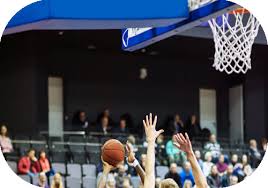Why NBA Live Streaming Has Become Essential
The NBA is one of the most dynamic sports leagues in the world, with games drawing millions of viewers across continents. Today, fans demand more than highlights—they want to experience every dunk, assist, and buzzer-beater as it happens. This is why nba중계 has become a crucial part of the modern basketball experience, connecting global audiences through real-time access.
From Ancient Wagers to Digital Platforms
Sports engagement has always been tied to anticipation and unpredictability. In ancient Rome, betting on gladiators was a communal ritual, as documented in Gladiators, Games, and Gold: The History of Wagering in Ancient Sports. Similar patterns appeared in European football culture, where prediction games shaped entire communities, as shown in From Totocalcio to Toto: How Predictive Games Shaped Sports Culture. NBA live streaming is the latest evolution of this long history, blending passion with digital innovation.
Technology and Accessibility
The success of NBA live streaming lies in the technology that makes it possible. High-definition video, mobile compatibility, and interactive platforms allow fans to connect with their favorite teams regardless of location. Whether you are in Seoul, New York, or London, instant access is no longer a luxury—it’s the standard expectation.
Parallels Across Global Sports
Basketball’s digital transformation mirrors trends in other sports. Football’s evolution from street matches to global tournaments has been accompanied by predictive culture, as detailed in From Pelé to Haaland: A Timeline of Football Passion and Prediction. Similarly, betting systems that once relied on local slips have transitioned into global data-driven networks, a journey explored in Sports Betting Then and Now: From Street Slips to Smart Systems. These connections highlight that real-time engagement is not unique to basketball but part of a larger cultural trend.
Key Features Fans Expect
- HD Quality: Smooth streaming with minimal buffering.
- Multi-Device Access: Compatibility across smartphones, tablets, and smart TVs.
- Live Data: Real-time stats, scores, and player performance updates.
- Interactive Platforms: Options for chat, reactions, and social sharing.
- Reliability: Stable servers that support peak traffic without interruptions.
Conclusion
NBA live streaming has redefined how fans connect with the sport. By combining cutting-edge technology with the timeless thrill of unpredictability, it continues a legacy that began in ancient arenas and evolved through football, betting systems, and now global basketball culture. For publishers, strategically integrating keywords like nba중계 and offering reliable streaming solutions ensures both higher visibility and long-term trust among audiences.









